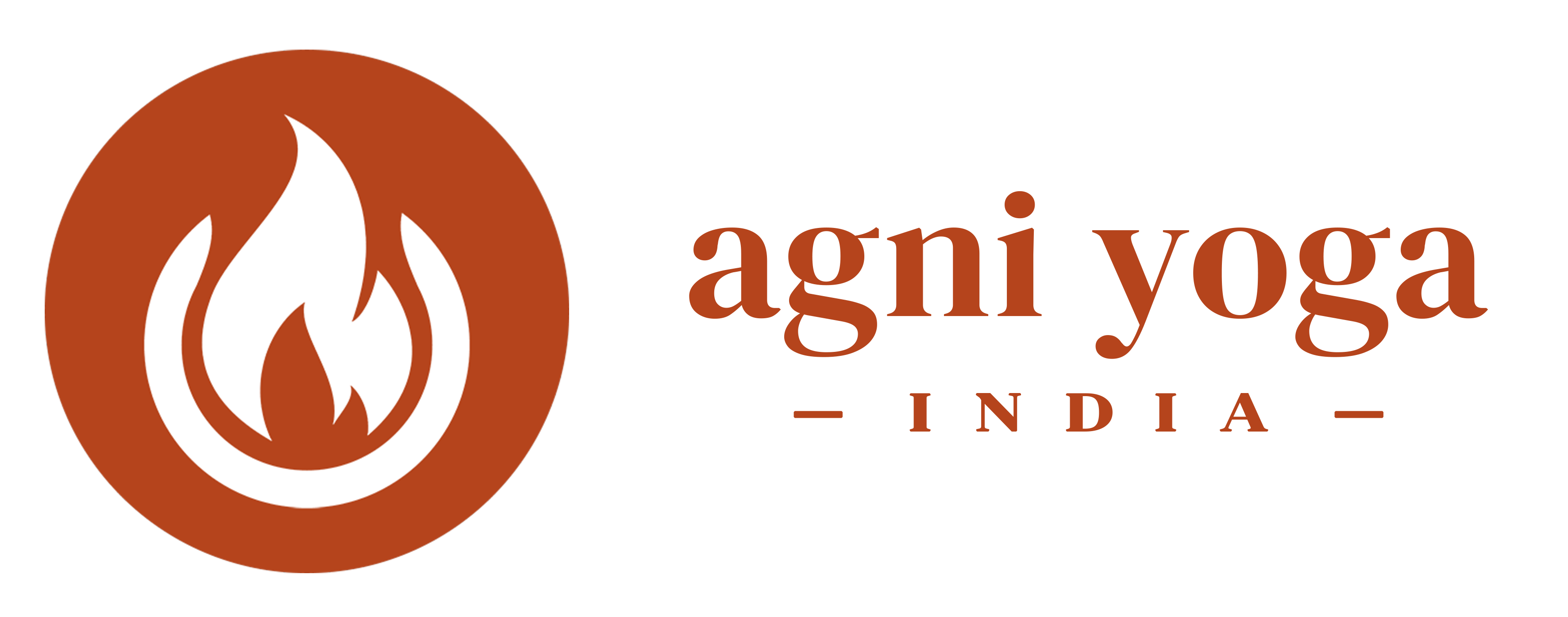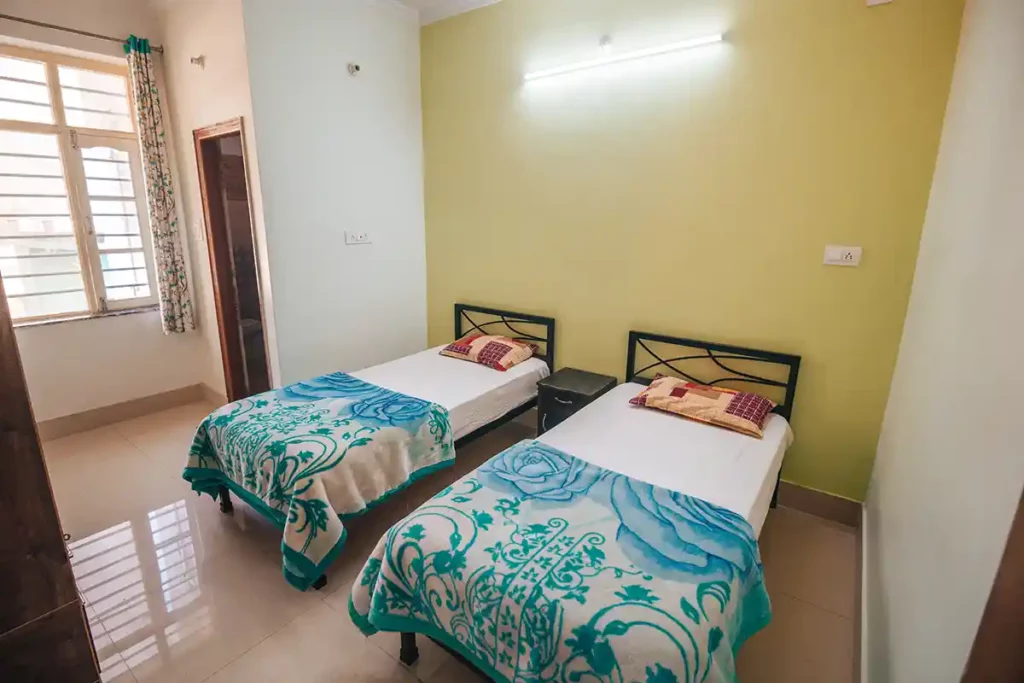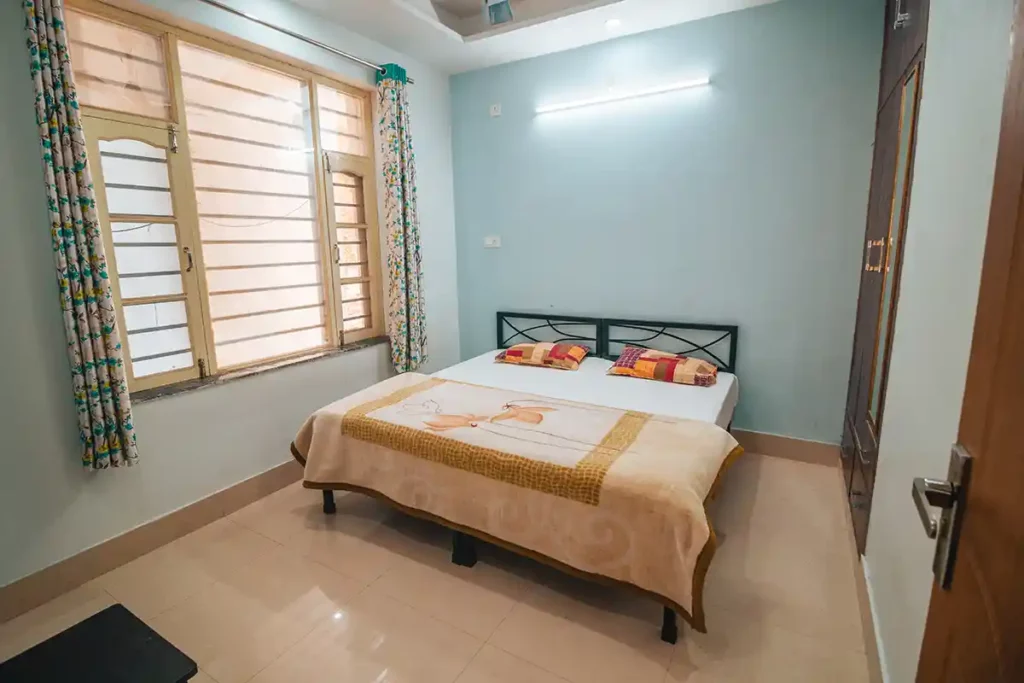500-HOUR YOGA TEACHER TRAINING IN RISHIKESH
Become a 500-hour certified yoga teacher
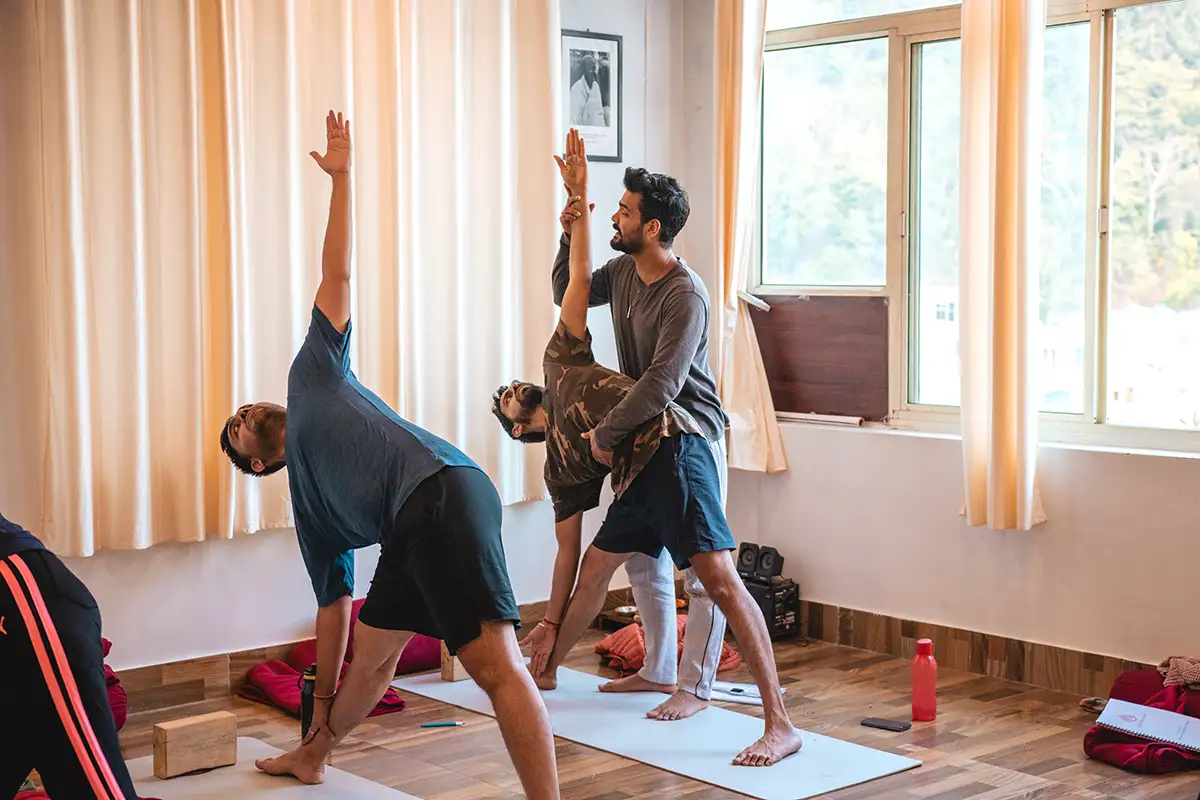
The 500-hour yoga TTC at Agni Yoga India is a combination of 200-hour yoga teacher training in Rishikesh and 300-hour yoga teacher training in Rishikesh spanning over two months, all while being surrounded by the mountains and the holy River Ganga. You will experience both the Primary Series and Intermediate Series of Ashtanga vinyasa yoga in this beginner-to-intermediate and intermediate-to-expert-level yoga course.
In the first stage, the program will commence with the 200-hour yoga teacher training course, where our expert group of instructors will help you understand the fundamentals of yoga schooling and the essential information on instructing yoga. Throughout the training, they will provide you instructions to build your confidence to perform asanas and teach yoga thereon.
In the second stage, this program will be taught as per the 300-hour yoga teacher training course methodology. You will explore more profound asanas with this level’s intermediate Series of Ashtanga vinyasa yoga.
Additionally, combining the two programmes will help you gain knowledge and self-confidence about Ashtanga vinyasa yoga in general. And as we get closer to the end, you’ll be fully equipped to teach and conduct your classes with thorough knowledge of asanas and related subjects.
If you have a strong desire to learn more about yoga, its practices and philosophy, then this course is meant for you. This teacher training course will provide you with a thorough understanding of yoga, regardless of whether you are new to yoga, you are a yoga practitioner or a teacher who wants to learn more or advance your knowledge.
58 DAYS / 57 NIGHTS ACCOMMODATION
(HOT WATER / Wi-Fi)
3 DELICIOUS VEGAN / VEGETARIAN
MEALS (BUFFET STYLE)
KNOWLEDGE FROM EXPERIENCED
TEAM OF TEACHERS
- You have been practising yoga intensively and continuously, and want to move to the next level.
- You want to deepen your knowledge of yoga and increase your knowledge beyond asanas.
- You want to go explore and go deeper in your practice of asanas, meditation and self-awareness.
- You want to learn how to find and maintain the spiritual balance between body, mind and soul.
- You are looking for a safe and well-maintained yoga institute that provides a friendly yet challenging environment to learn and grow.
- You have a strong desire to spread your knowledge of yoga with others through the medium of teaching.
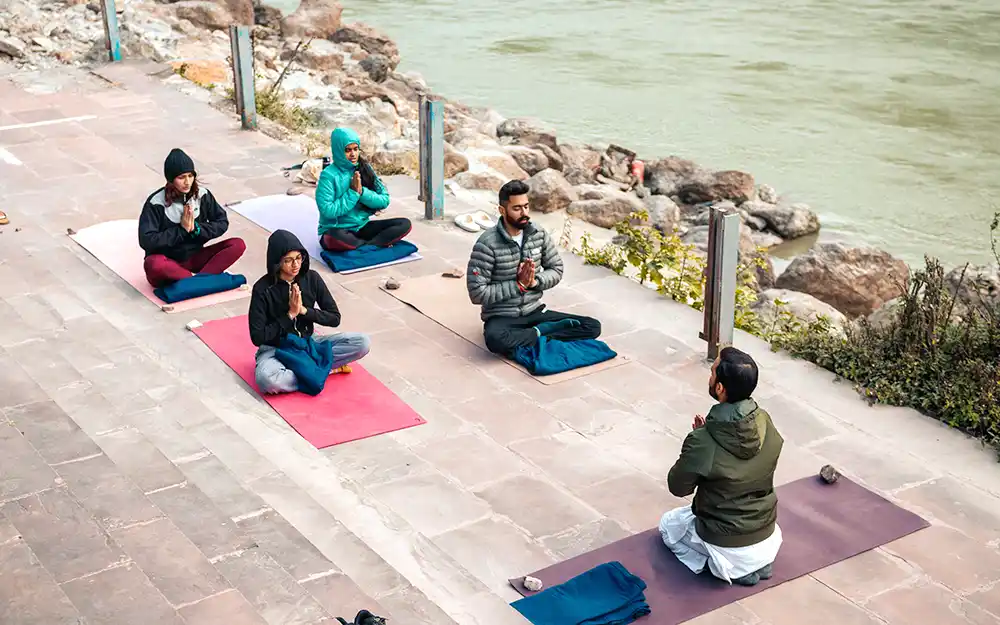
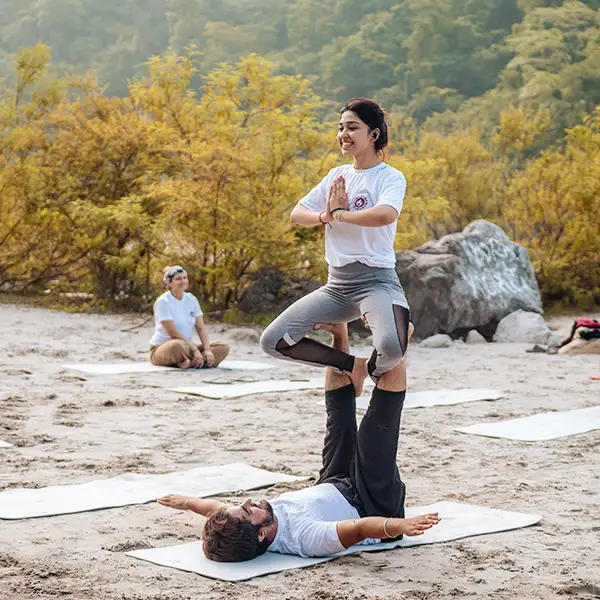
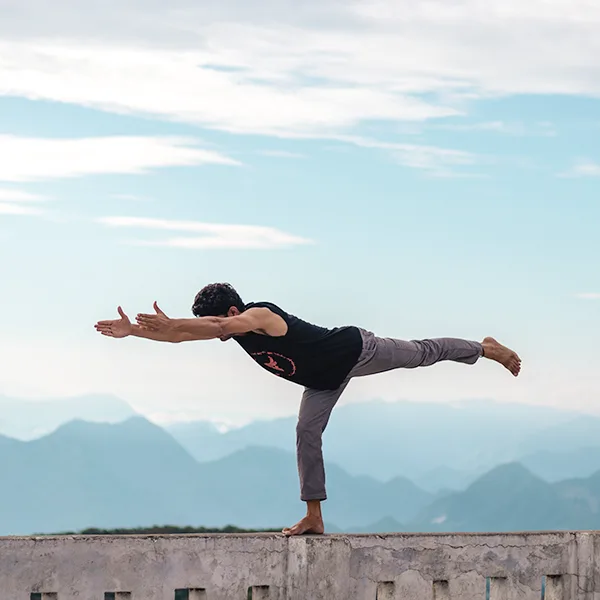
500-Hour Yoga TTC in Rishikesh
Ashtanga Vinyasa Yoga
INTERMEDIATE SERIES
Ashtanga Vinyasa Yoga was founded by K. Pattabhi Jois during the twentieth century. He acquired his knowledge from his Guru, Shri Tirumalai Krishnamacharya. Ashtanga Vinyasa Yoga emphasises a key component known as a Tristana (three places of action or attention) and Vinyasa, which is a combination of breath and movement.
There are core concepts for Ashtanga vinyasa yoga practice, encompassing the three levels of purification: the body, nervous system and the mind. They are to be performed in conjunction with each other. The Intermediate series is called Nadi Shodhana, which means purification of the nervous system. It strengthens and cleanses the nervous system and the energy channels. The series follows the same progression as the primary series with the addition of intense back-bending asana and other advanced yoga postures.
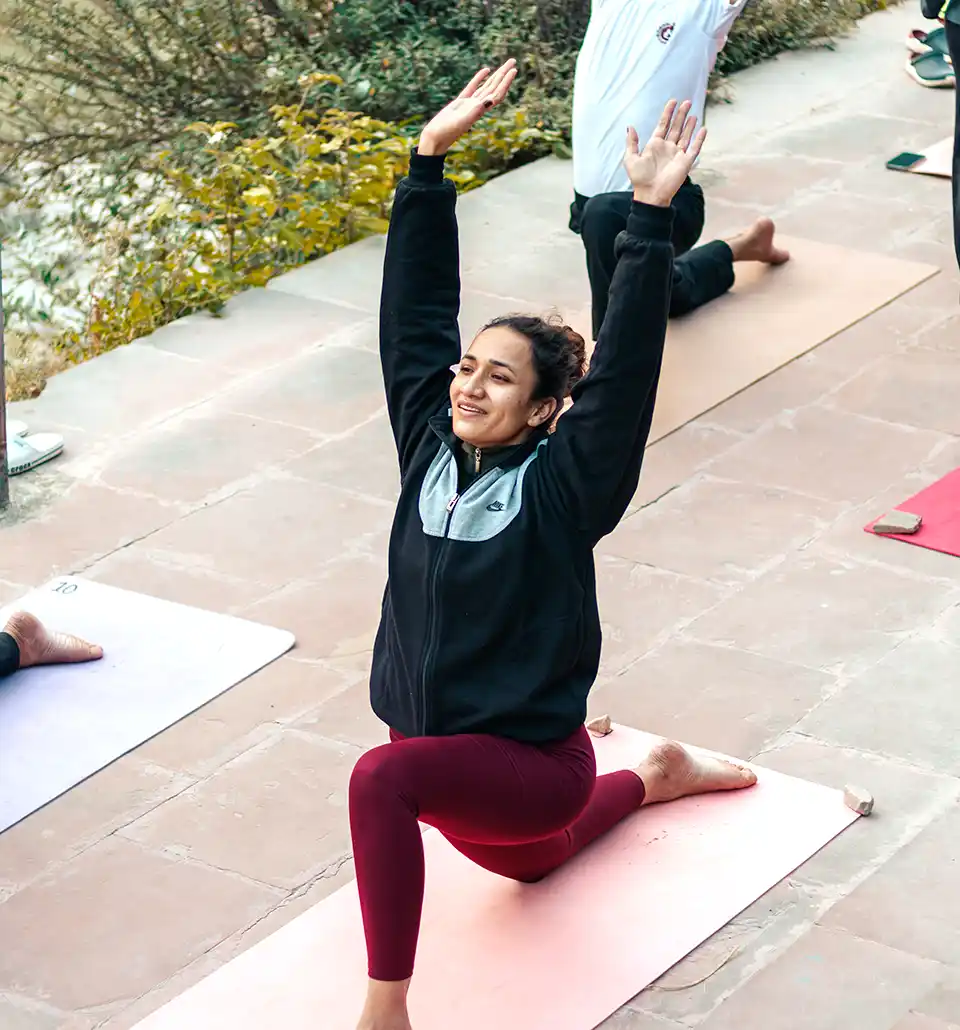
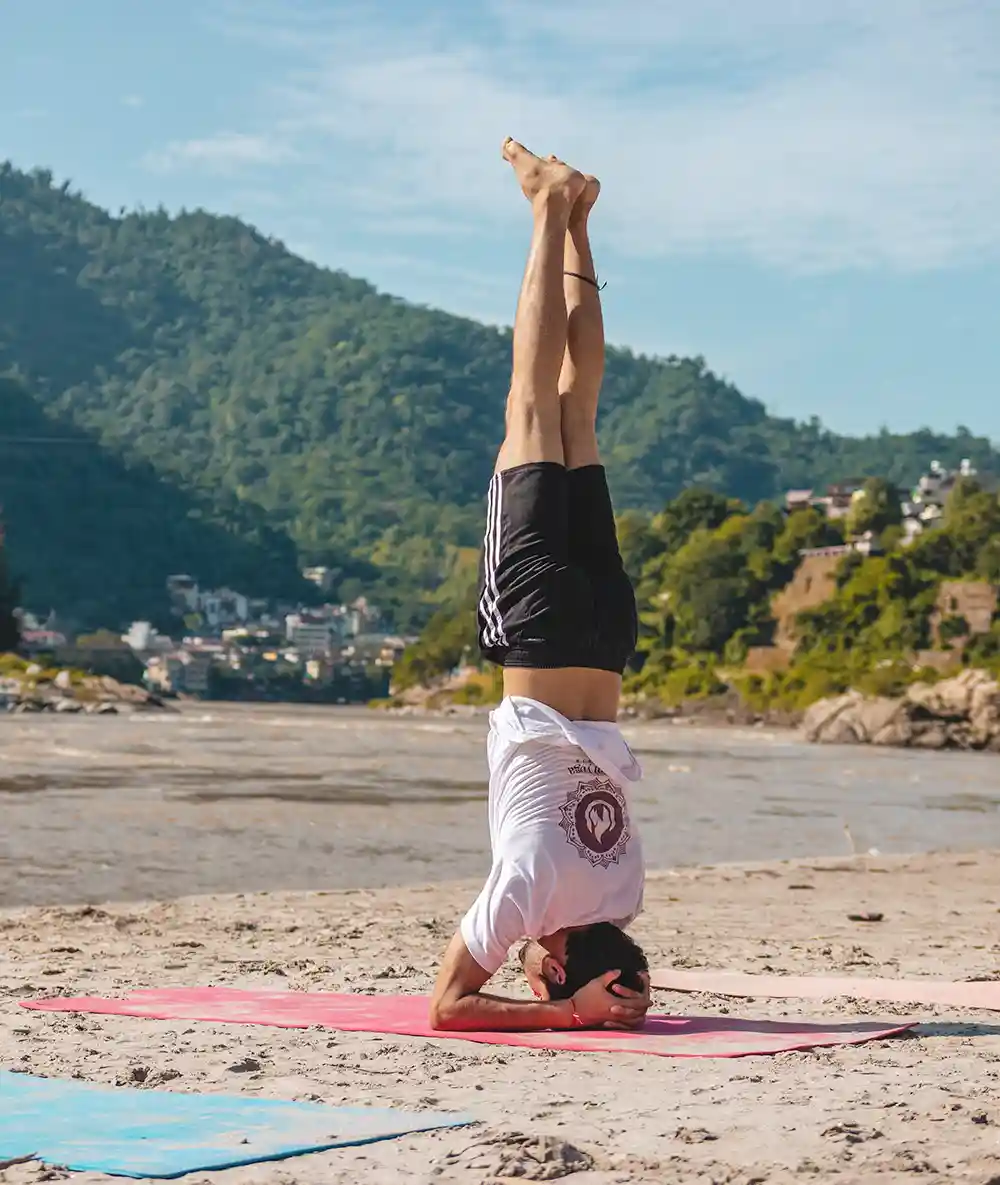
Traditional Hatha Yoga
Hatha Yoga seeks to unite mind, body and spirit through five elements –
Asana (postures), Pranayama (yogic breathing), Mudra (body gestures), Bandha (energy locks) & Shatkarma (inner cleansing).
These body-centred practices under Hatha yoga not only strengthen and cleanse the physical body, but they also cultivate prana (life-force energy) and invoke kundalini (dormant spiritual energy).
While practising Hatha Yoga, you will also have the chance to learn about Yin and restorative yoga as part of our 200-hour and 300-hour Yoga TTC. You will be taught basic, intermediate and advanced-level hatha yoga. Spanning over 52 days, this TTC will enhance your experience and knowledge of other yoga practices and traditions as well.
Syllabus for 500-Hour Yoga Teacher Training Course
Yoga Philosophy
FUNDAMENTALS OF YOGA
- Introduction to yoga sutras of patanjali
- Importance of discipline in the path of yoga
- Definition of yoga
- Vrittis (mental fluctuations) and their classification
- Obstacles and distractions on the path of yoga (concepts of citta-viksepa and antaraya)
- Ashtanga yoga – Yama , Niyama, Asana, Pranayama, Pratyahara, Dharana, Dhyan, Samadhi
- Introduction to chakras and its functions
- Lives of yogis (Inspiring stories)
- Karma and its types
- Consistent practice and non-attachment (Abhayasa and Vairagya)
- The concept of Ishwar (God) in Yoga Sutra
- Panchklesha (5 causes of suffering)
- Concept of siddhi (supernatural power)
- Concept of Triguna
- Introduction to Bhagavad Gita
Pranayama & Shatkarma
YOGIC BREATHING & CLEANSING
- Introduction to Pranayama and Pranic Body
- Natural and Abdominal Breathing
- Thoracic and Clavicular Breathing
- Yogic breathing
- Nadi shodhana and its variations
- Sheetali Pranayama
- Bhramari pranayama
- Ujjayi pranayama
- Bhastika Pranayama
- Kapalbhati Pranayama
- Surya Bhedi and Chandra Bhedi Pranayama
- Agnisar kriya
- Kumbhaka
- Introduction of shatkarma and its importance in yogic lifestyle
- Jal neti and Sutra neti
- Eye cleaning (eye cups)
- Kunjal
- Shankh Prakhshalan
- Trataka
Dhyana
MEDITATION PRACTICES
- Why meditation?
- Brain waves meditation and its effect on stress management
- Obstacles in meditation
- Role of concentration in meditation
- Tips for developing concentration
- Meditation on body and breath
- Mantra meditation
- Antat and Bahir’s meditation
- Trataka meditation
- Dynamic meditation
- Tips for silence meditation practice
- Japa meditation and ajapa japa
- Antar Mouna
- Nada meditation
Therapeutic Yoga
DEEP STUDY OF YOGIC MOVEMENTS
- Introduction of Yoga Therapy
- Physiology & therapeutic benefit of shatkarma
- How to make a Yogic therapy session
- Homeostasis & pH Effect on Health
- Arthritis – osteoarthritis and Rheumatoid arthritis
- Back pain – Explanation & Yogic approach
- Endocrine system – importance of glands
- PCOD – polycystic ovary syndrome & Yogic Approach
- Respiratory diseases – COPD & Yogic Approach
- Menstrual cycle & hormones
- Kati Basti – Ayurvedic oil therapy
- Cupping therapy
- Ayurveda & Dincharya
Bandhas & Mudras
GESTURES & ENERGY LOCKS
- Introduction of Bandha & Mudras
- Uddiyana bandha
- Jalandhar bandha
- Mula bandha
- Maha bandha
- Jnana and chin mudra
- Yoni mudra
- Bhairava mudra
- Shambhavi mudra
- Nasikagra mudra
- Prana mudra
- Maha mudra
- Maha vedha mudra
- Different mudras for better health
- Mudra for concentration
- Common mudras for daily use
Body Anatomy
STUDY OF THE HUMAN BODY
- Skeletal system
- Muscular system
- Body system
- Muscle functions according to joint movements
- Respiratory system
- Endocrine and Circulatory system
- Nervous and Digestive system
- Physiological benefits of asana
- Anatomy of spine
- Hip anatomy
- Knee anatomy
- Muscle Activation
- Imbalances in the body and how to observe them
- Active and passive Muscle stretching techniques
- Anatomy of shoulder joint complex
- How to unlock the flexibility of shoulder
- Nerve tensioning mudras
- Anatomy of ankle joints and how to enhance their functions
Teaching methodology
LEARNING HOW TO TEACH
- Positive & conscious communication
- Friendship and trust
- Time management
- Qualities of a teacher
- Principles of demonstration, observation, assisting and correction
- Use of voice in class
- Mental & emotional preparation for teaching
- Step-by-step class structure planning.
Evaluation based on
YOGA ALLIANCE CERTIFICATION
- Attendance
- Assignment
- Practical Exam of asana classes
- Written test
- Performance
- Behaviour
Sample Daily Schedule
200-HOUR YTT COURSE RISHIKESH
TIME ACTIVITY
06:00 – 07:30 AM Hatha Yoga
07:45 – 08:45 AM Shatkarma & Pranayama
09:00 – 09:45 AM Breakfast
10:00 – 11:00 AM Yoga Philosophy
11:00 – 12:00 PM Body Anatomy
12:00 – 01:00 PM Asana Alignment
01:00 – 01:45 PM Lunch
01:45 – 04:15 PM Self Study / Free time
04:15 – 05:45 PM Ashtanga Vinyasa Yoga
06:00 – 07:00 PM Meditation
07:00 – 07:45 PM Dinner
10:00 PM Lights off
300-HOUR YTT COURSE RISHIKESH
TIME ACTIVITY
06:00 – 07:30 AM Hatha Yoga
07:45 – 08:45 AM Shatkarma & Pranayama
09:00 – 09:45 AM Breakfast
10:00 – 11:00 AM Yoga Philosophy
11:00 – 12:00 PM Body Anatomy
12:00 – 01:00 PM Asana Alignment
01:00 – 01:45 PM Lunch
01:45 – 04:15 PM Self Study / Free time
03:10 – 04:10 PM Yoga Therapy
04:15 – 05:45 PM Ashtanga Vinyasa Yoga
06:00 – 07:00 PM Meditation
07:00 – 07:45 PM Dinner
10:00 PM Lights off
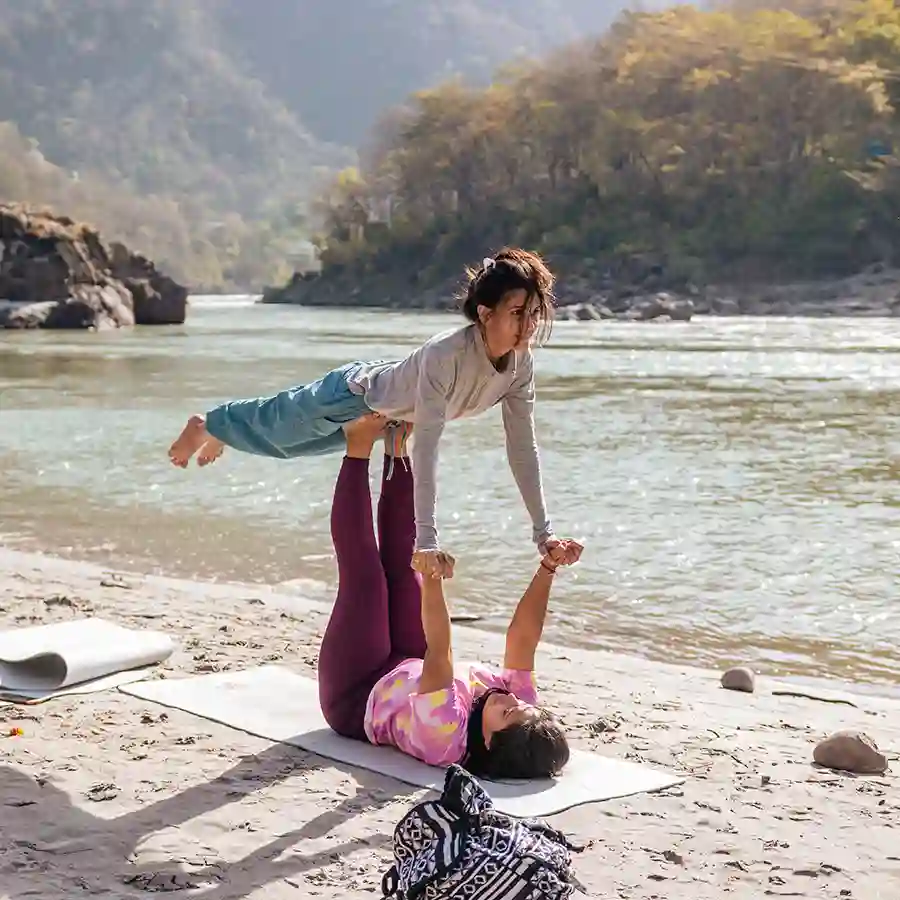
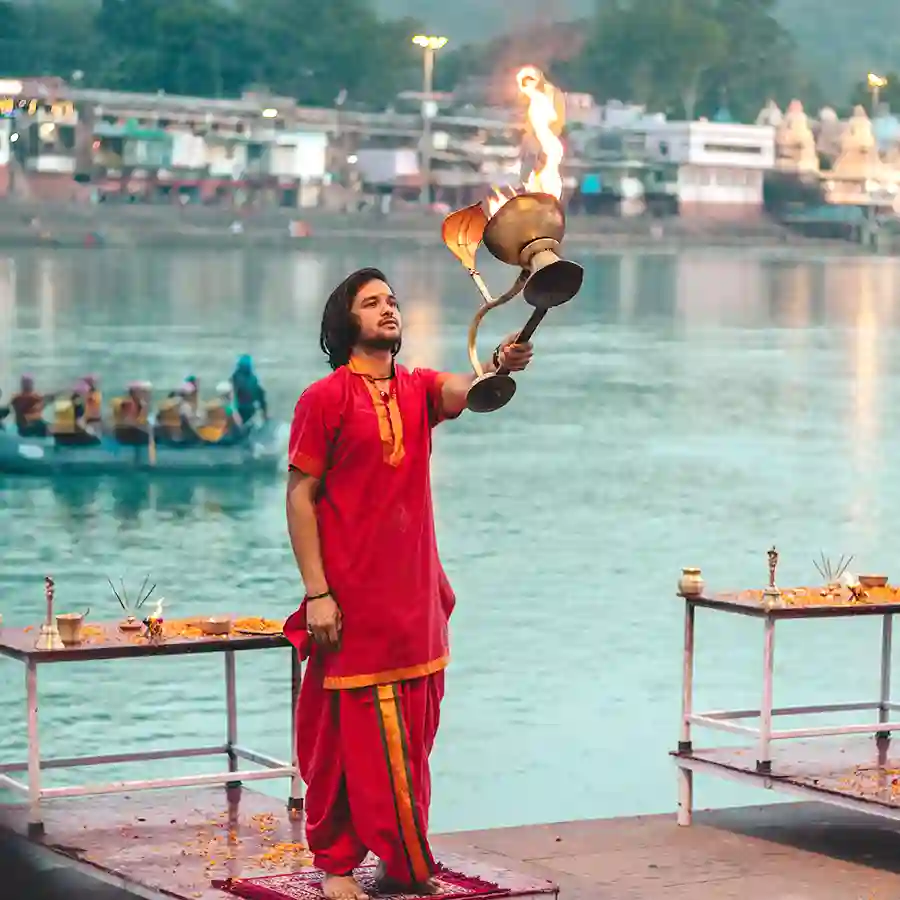
(Fire Ceremony at the Ganges)
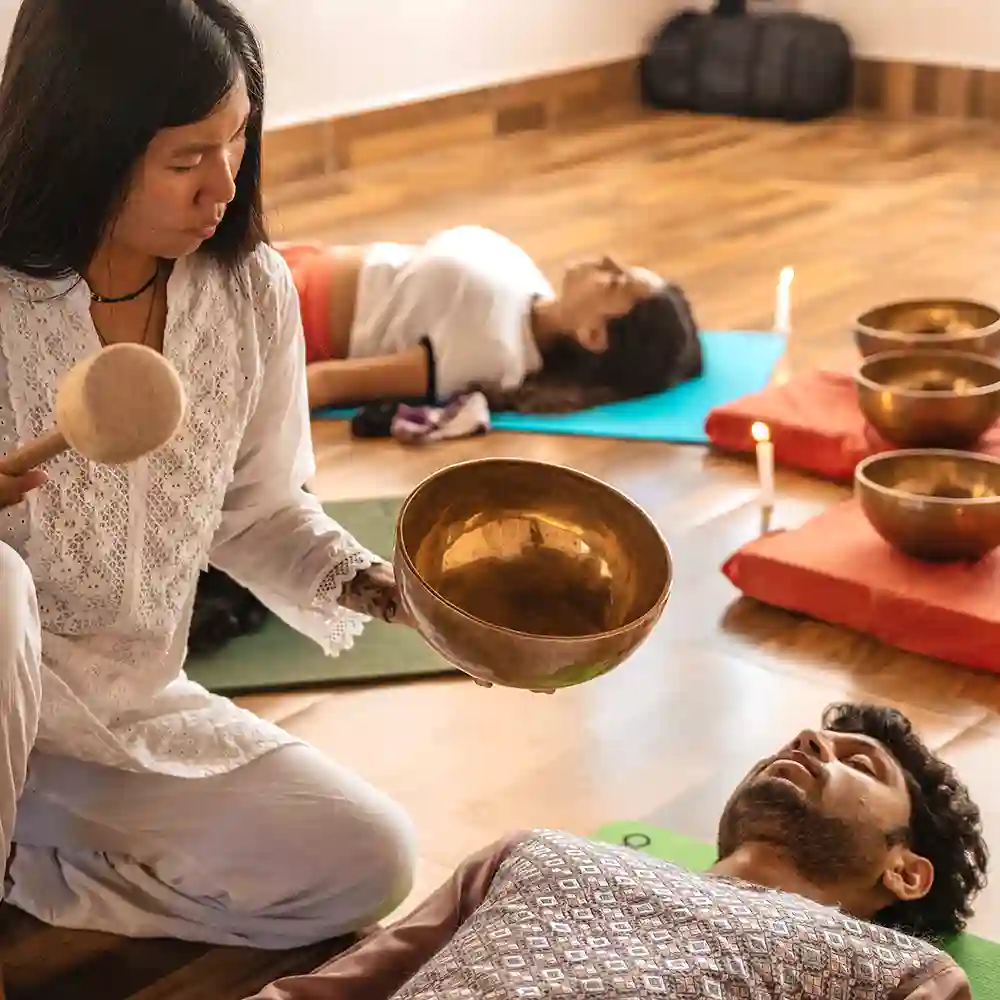
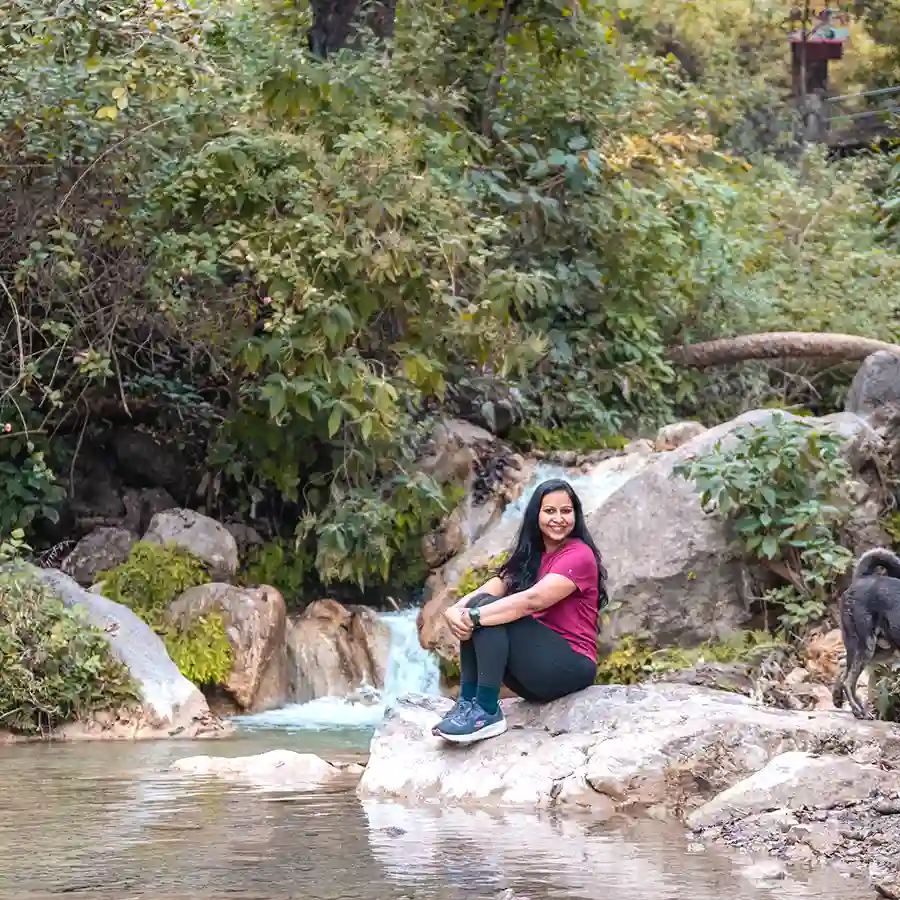
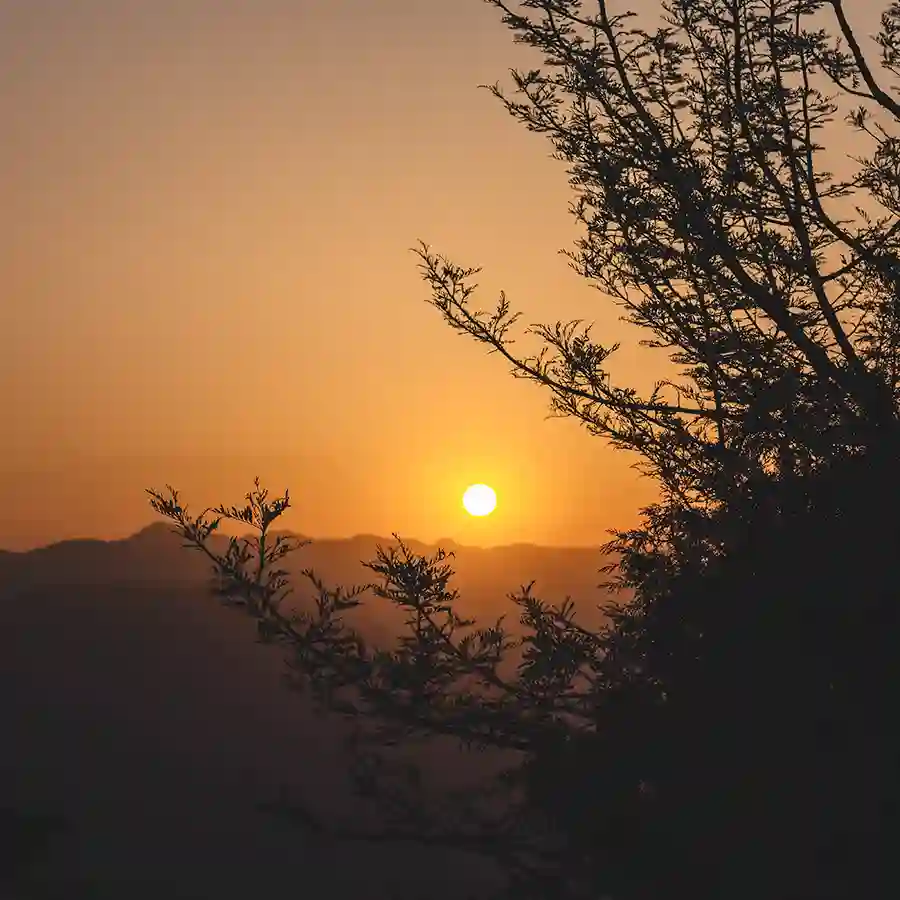
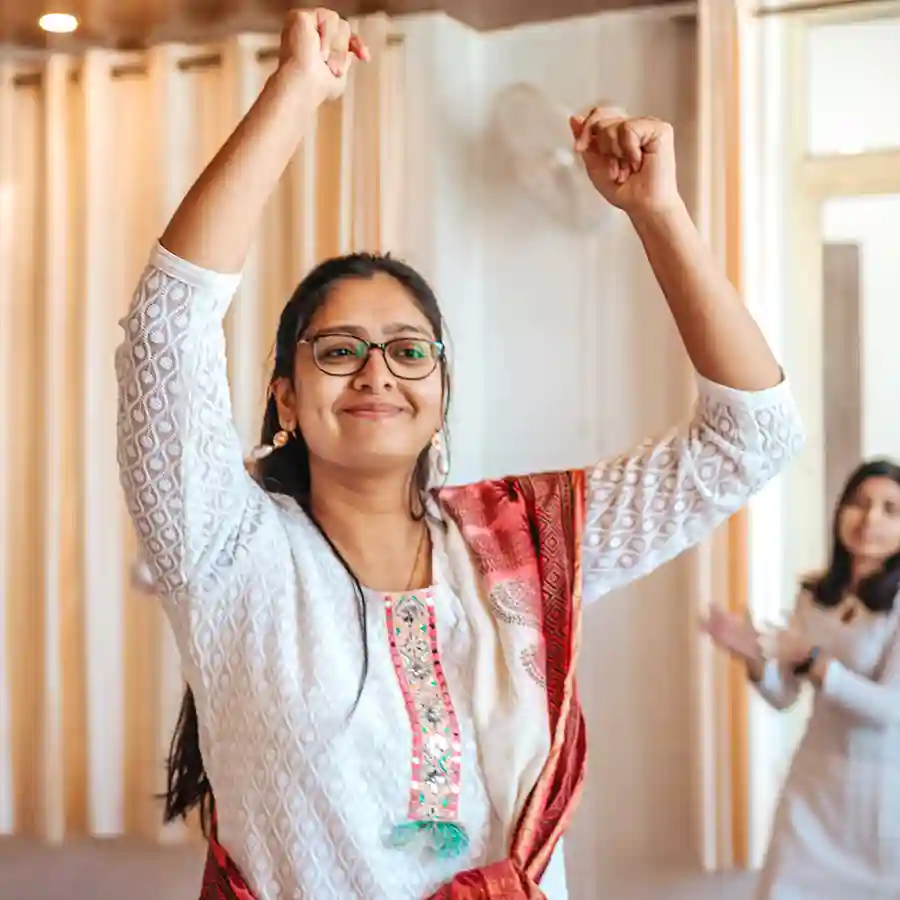
Course dates For 500-hour Yoga Teacher Training in Rishikesh
| Course Dates | Seat Availability | |
|---|---|---|
| 2nd May 2024 | Ongoing | |
| 2nd June 2024 | Almost Full | enroll now |
| 2nd July 2024 | Almost Full | enroll now |
| 2nd August 2024 | Almost Full | enroll now |
| 2nd Septermber 2024 | Available | enroll now |
| 2nd October 2024 | Available | enroll now |
| 2nd November 2024 | Available | enroll now |
| 2nd December 2024 | Available | enroll now |
| 2nd January 2025 | Available | enroll now |
Booking process
You can make a deposit $400 to book your spot. We accept payments via Bank Transfer, Wise or Paypal.
You’ll be getting an official confirmation letter from our side once we successfully receive your booking amount.
Arrival & Departure
The arrival time for our retreat program is anytime between 11:00 AM to 3:00 PM on the same date the retreat begins.
The departure takes place on the last day of the retreat at 11:00 AM post breakfast.
Embark on the transformative journey of self-discovery, evolving as a dedicated yoga practitioner and compassionate teacher. Unlock the potential within to inspire and uplift others.
Deepen Your Knowledge - Yoga for Beginners
By attending our Agni yoga’s 500-hour Ashtanga Hatha Yoga Teacher Training in Rishikesh you will:
- Learn how to teach and practice a broad range of asanas and mudras.
- Learn the appropriate and correct alignments for each posture.
- Explore the modifications and variations of the most common asanas.
- Understand the basic concepts of yoga anatomy and how the body works.
- Experience and practice different types of pranayama and breathing techniques.
- Explore various ways to meditate and get to know about different types of mantra chantings
Our 500-Hour Yoga Teacher Training Rishikesh is a hands-on course designed to prepare you to teach yoga to students of all skill levels. Not only you will advance your skills, you will also guide your students by taking them to the next level of practice. By the time the course ends, you’ll be able to create and design your asana flow sequences and instruct confidently.
There will be several opportunities for you to teach during the course as well because our approach is a practical teaching methodology. Our instructors will encourage you to start some classes occasionally with mantras and prayers. By the end of the program, you’ll be prepared to instruct the entire class. To help you grow and develop your style, you will be given feedback from time to time by your teachers and peers.
The Art of Teaching
Our 500-hour Yoga Training Rishikesh will help you deepen your practice of yoga and help you gain confidence in your knowledge. This process will enable you to teach from your heart and personal experience rather than just from mouth and memory. Our Yoga Teacher Training program is a practical training course designed to help you to become an effective Yoga teacher for all levels of students. By the end of the course, you will be able to create asana flow sequences on your own and will be able to teach confidently.
Since we offer you a practical approach, there will be lots of opportunities for you to teach. During the course, our teachers will encourage you by making you begin the class sometimes with mantras and prayers, and by the end of the course, you will be ready to teach the entire group. You will receive feedback from your teachers and your classmates as well, to help you to improve and to find your unique voice and style as a teacher.
You will learn the basic principles of creating Hatha and Vinyasa Flow sequences based on a chosen theme. There will be lots of guidance on how to improve and enhance your teaching skills and how to plan and structure a class.
Besides, you will learn about the principles of demonstration, assisting and correcting, verbal instructions, teaching styles, the qualities of a teacher, voice projection, planning and structuring a class, alignment, hands-on-adjustment, dealing with injuries and safety precautions, ethics, and much more.
Who is qualified to apply for the program?
Anyone can enrol for the program, with or without prior yoga knowledge and experience. After the completion of the course, you will be qualified to teach anywhere in the world and not just in India. The minimum age to enrol in this course is 18 years.

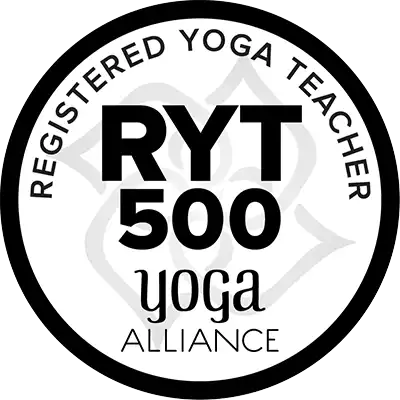
After the successful completion of the course, you will receive Yoga Alliance International accreditation which will allow you to teach all around the globe.
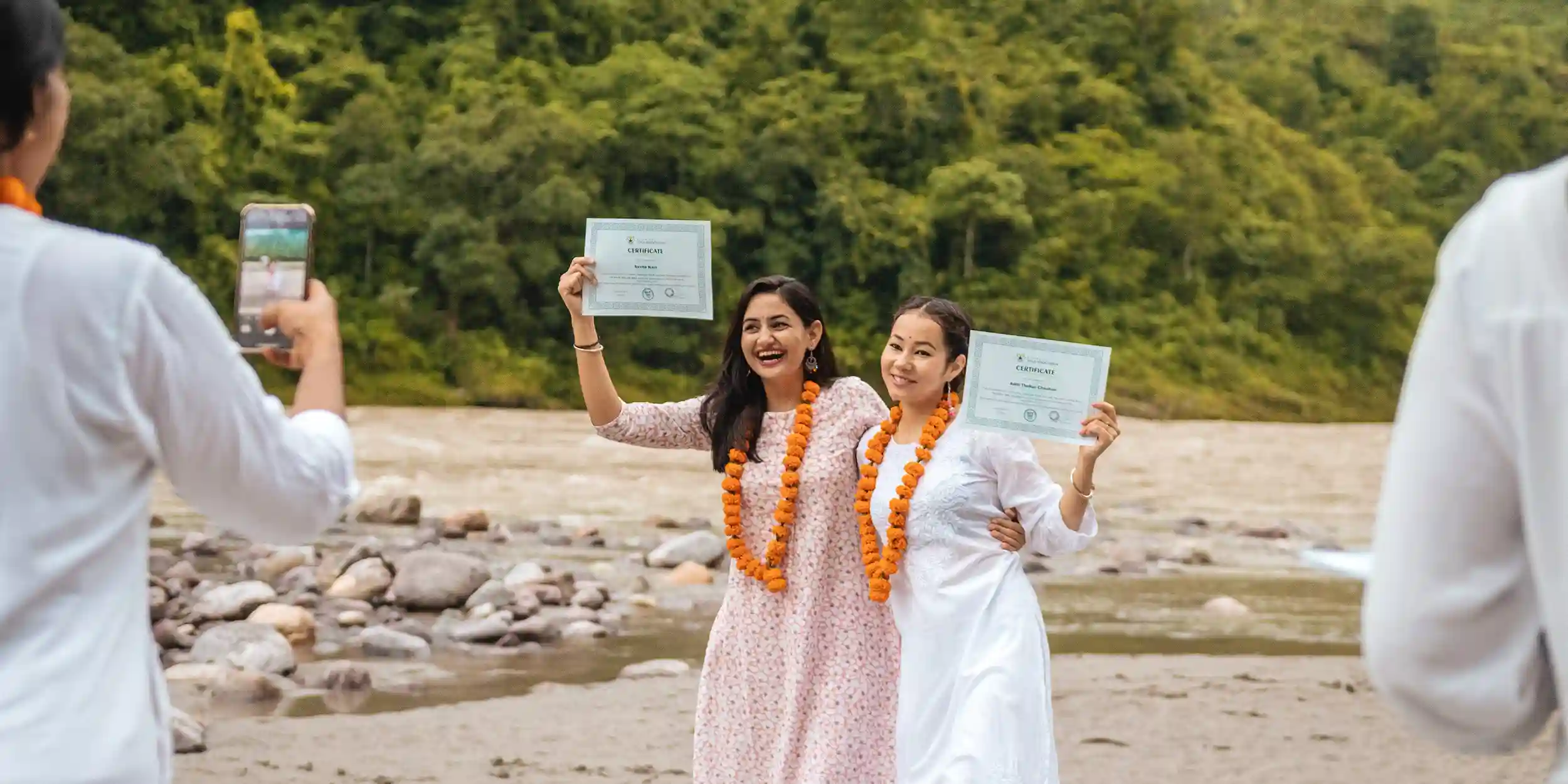
Agni Yoga India on Instagram
A 500-hour yoga teacher training program is an intensive course designed to deepen your understanding and practice of yoga beyond the foundational 200-hour level. It encompasses advanced techniques, teaching methodologies, philosophy, anatomy, and personal development.
Rishikesh, known as the yoga capital of the world, offers a serene and spiritually charged environment perfect for deepening your yoga practice. It is home to many ashrams, experienced teachers, and the holy Ganges River, making it an ideal location for immersive yoga teacher training.
Typically, completion of a 200-hour yoga teacher training program is required before enrolling in a 500-hour program. Additionally, a consistent yoga practice and a genuine interest in deepening your understanding of yoga are essential.
You can expect to delve deeper into yoga philosophy, advanced asana (poses), pranayama (breath control), meditation techniques, anatomy, teaching methodology, and the business aspects of yoga instruction. The program aims to equip you with the knowledge and skills to teach yoga confidently and effectively.
A 500-hour yoga teacher training program in Rishikesh typically lasts around 8-10 weeks, depending on the specific curriculum and schedule of the school or ashram offering the program.
The cost of a 500-hour yoga teacher training program in Rishikesh varies depending on factors such as the reputation of the school, the duration of the program, accommodation options, and additional amenities included.
Yes, upon successful completion of the 500-hour yoga teacher training program and meeting all requirements set forth by the school or ashram, you will receive a certification recognized by Yoga Alliance or other relevant yoga organizations.
After completing a 500-hour yoga teacher training program, you will be equipped to teach yoga professionally in various settings, including yoga studios, fitness centres, retreats, corporate environments, and private sessions. You may also choose to specialise in specific yoga styles or therapeutic applications.
